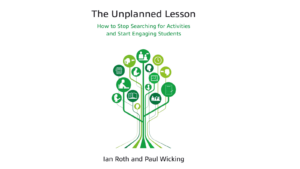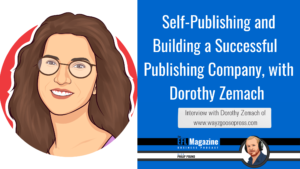Book Review: Brainstorming by Erasmus and Houston
“Brainstorming”, written by Gerhard Erasmus and Hall Houston, is a new eBook published by the round this year. The main focus of this publication is obviously on the use of brainstorming, which is regarded as “a fantastic way to generate a lot of useful ideas quickly and easily” (p. 4) from all learners in the classroom. Personally, I have been using brainstorming techniques in class since I started teaching over 10 years ago but I have never stopped to think why. Thus, this new eBook piqued my interest and I dived straight into it.
The first chapter introduces how brainstorming was initially invented for an advertising agency back in 1953 by Alex Osborne. This is quickly followed by some practical ideas to consider when incorporating brainstorming techniques within your classroom. These include: organising the classroom to ensure that it is most conducive for providing ideas in class, defining the situation or problem accurately so that students can contribute effectively, avoiding any negative feedback, how involved the teacher will be during discussions or whether to elect a group leader with different student groups, as well as remembering the main aims of the brainstorming activity. Further within this chapter, Erasmus and Hall suggest additional practical ideas for classroom activities such as using brainstorming to assist in “How can I …?” or “What are some ways I can …?” as well as using debatable situations such as “My neighbour plays music too loud. What should I do?” to prompt discussion during the brainstorming focus. The final focus in the first chapter is dealing with common problems during brainstorming sessions, which have been recognised as silence, social loafing, uncreative ideas or instant negative criticism.
The second chapter initially looks at eight suggested lesson activities revolving around brainstorming, with staging included in each lesson activity. The authors have thought of some inventive brainstorming activities which can be exploited to suit any class or lesson focus. I found a lot of the activities support the basic tenets of Dogme ELT and that the teacher could then focus on emergent language after the brainstorming and discussion activities. As well as these eight activities within this chapter, there are some additional general ideas related to brainstorming in class. These ideas include brainstorming on the whiteboard, solving problems in pairs, speaking versus writing, rolestorming – which is a combination of roleplay and brainstorming – as well as collaborative writing for problem solving. There are a lot more activities which can also be used in class and reading these yourself would do itself justice.
The final part of the book provides a general overview about the authors and their background to English language teaching. Both Erasmus and Houston are highly experienced language teachers with this eBook complementing an area of teaching which, as I considered, was something that is often overlooked. “Brainstorming” is available in a variety of formats such as for Kindle, iBook on iOS devices or Mac as well as via PDF format so any reader, no matter their technological set up, would have access to this eBook.
The eBook is invaluable for teachers who wish to seek inspiration for prompting learners to communicate and debate in English in a way related to brainstorming. I suppose the only area this eBook could develop would be a content list and some images to complement the activities in this publication. However, despite these little concerns, all activities are very well written and it is a great example The Round do by publishing eBooks for English language teachers.




